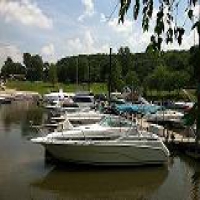Deutsche Telecom Works Toward One B
Post# of 17653

Deutsche Telecom Works Toward One
BARCELONA -- Mobile World Congress -- Despite being at Mobile World Congress,
Deutsche Telekom is keen to move the attention away from wireless and on to the idea of convergence.
Integrating its wireless and fiber networks is a big goal for the German operator. As such, Claudia Nemat, board member, Europe and technology, says Deutsche Telekom AG (NYSE: DT) will have eight million IP lines across its footprint in Europe by the end of the year. It has already converted 2.1 million lines in Germany, but aims to convert its entire footprint by 2018.
"Mobile-only business models aren't really sustainable in the long run," she told attendees at a DT press conference in Barcelona, adding that a holistic strategy means best customer experience can be created.
That strategy starts with a migration away from the PSTN to create the same platform for all the services Deutsche Telecom offers. That way, all updates become software-driven; product cycles are reduced, and costs should go down as well, Nemat said. Macedonia is the first country DT has moved to all-IP, noting that the operator saved €20 (US$27) per customer per year as a result. Slovenia is next on the list, then Hungary, Croatia, Montenegro, and finally Germany, Romania, and Greece, which she said are more complex markets.
While Nemat barely mentioned the big buzzword SDN, her comments mesh with what DT has said in the past about software-defined networking. Axel Clauberg, VP of aggregation, transport, IP, and fixed access networks, told Light Reading in October that the carrier would shift to a simplified, software-defined network as well as a next-generation OSS to compete against over-the-top players. (See Deutsche Telekom: A Software-Defined Operator .)
Simplifying will be a big task, however. The operator has more than 150 cities in Germany equipped with LTE at 150 Mbit/s and is plotting 5.5 million LTE terminals in the country by the end of the year. Almost all of its mobile sites are connected to fiber, and Neik Jan van Damme, a board member in Germany, said the focus is on doubling the coverage of VSDL in Germany.
"We have for 2014 the first 40 local networks that will be connected with vectoring," he said. "We'll have 3 million households ready for vectoring by the end of 2014."
To show it's serious about convergence, the DT execs showed off a new Huawei Technologies Co. Ltd. -built Fiber Access router that combines fixed-line and mobile for the fastest speeds in home. The device, which was trialed in Macedonia, will be available in the autumn.
Deutsche Telekom CEO Timotheus Hottges also reiterated the convergence talk of his board members in a keynote address on Tuesday. Consumers don't care about connectivity provided they have the best data access, he said, suggesting that means they should have just one contract and a global SIM service as well.
"Fixed-mobile convergence, HetNets, small cell networks -- we have to make these networks integrated and fast," he said. "Fast means LTE, LTE-Advanced, Cat 6, MIMO, vectoring, fiber-to-the-home, and beyond."
 (0)
(0) (0)
(0)